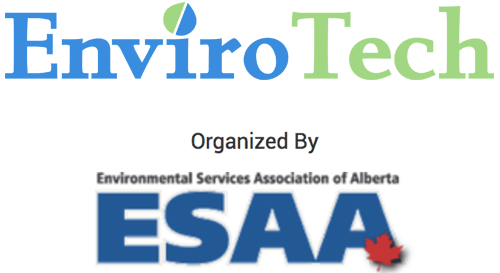
EnviroTech 2018
- Date: April 3-5, 2018
- Location: Hyatt Regency, Calgary, AB + Google Map
Chemistry Matters personnel presented at EnviroTech 2018 this year. We presented Unscrambling Contaminant Mixtures to Determine their Chemical Fingerprints and Whose PAH is this?. Abstracts from both Chemistry Matters presentations are included below.
Unscrambling Contaminant Mixtures to Determine their Chemical Fingerprints
Many contaminated sites have mixed plumes or contaminants of concern from multiple potential sources. Examples of mixed plumes could include mixed free phase petroleum plumes (e.g. condensate) or polycyclic aromatic hydrocarbons (PAHs) from crude oil spills mixing with upstream or local anthropogenic sources (storm water runoff) of PAHs in sediments.
There are several advanced statistical techniques that can be used to determine the number and different sources of contaminant present on the site. In addition, these statistical tools can also apportion the amount of contaminants in each sample, thereby allowing liability to be distributed according the chemistry of the contaminants and those responsible for the release. Apportionment is important for litigious cases as it allows the calculation of who should pay for what portion of the cleanup.
Tools using positive matrix factorization (PMF) have been developed by US EPA but are no longer being supported are still publicly available to use. These techniques can be applied to many different chemical mixtures such as condensates or mixed petroleum hydrocarbon plumes. We have successfully applied the technique to PAHs from sediment data to allocate the source of the PAHs in the sediments to sources identified by the models. Unfortunately, these models are not definitive and provide multiple conclusions depending on their starting point which can make interpretation difficult and sometimes questionable, especially for litigation proceedings.
This presentation will provide a summary of statistical tools used for chemical fingerprinting as well as the use of PMF and Bayesian modelling in order to provide some guidance on model usage for contaminant apportionment. The models need to be applied conservatively and require chemistry interpretation to elucidate what end members have been identified by the model and if those end members make sense. The models will be applied to a real case study scenarios to demonstrate their application.
Lawyers, regulators and environmental professionals involved in spill monitoring and liability determination will find this presentation educational in how these statistical models are able to determine sources and amounts of those sources of contaminants on site.
River sediment contains natural organic material, largely derived from allochthonous sources, meaning a source from outside the river. This is particularly important when regarding polycyclic aromatic hydrocarbons (PAHs), which can have sources hundreds of kilometers from a sampling point within the river catchment. In fact, every river can contain PAHs from a source other than that which is the focus of a remedial investigation, and consideration of this is very important.
Presentation of the detection of PAHs in relation to guidelines is a requirement for regulatory purposes. However, if those PAHs are natural, or at least originate from a source that is unrelated to the investigation, why take responsibility for them?
In order to determine the source of PAHs it is important to collect the right kind of samples (fine grained, highly organic sediment), analyse for the right kind of chemical package (include alkylated PAHs), and interpret the results using the right kind of techniques.
This presentation describes the correct, and incorrect use of environmental forensics techniques using example datasets from our work in Canadian oil spill response and US CERCLA investigations. It focuses on how to construct and interpret PAH fingerprints and ratios, and the use of statistics such as PCA. Environmental professionals involved in spill remediation or site monitoring will find this presentation applicable.
For more information about EnviroTech 2018, click here.

 Provides expert support to projects involving litigious or contentious subjects. These expert witness services are founded on chemistry principles and proper application of scientific methods.
Provides expert support to projects involving litigious or contentious subjects. These expert witness services are founded on chemistry principles and proper application of scientific methods.